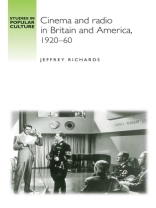Cinema and radio in Britain and America, 1920-60 charts the evolving relationship between the two principal mass media of the period. It explores the creative symbiosis that developed between the two, including regular film versions of popular radio series as well as radio versions of hit films.
This fascinating volume examines specific genres (comedy and detective stories) to identify similarities and differences in their media appearances, and in particular issues arising from the nature of film as predominantly visual and radio as exclusively aural. Richards also highlights the interchange of personnel, such as Orson Welles, between the two media. Throughout the book runs the theme of comparison and contrast between the experiences of the two media in Britain and America. The book culminates with an in-depth analysis of the media appearances of three enduring mythic figures in popular culture: Sherlock Holmes, Tarzan and The Scarlet Pimpernel.
Students, scholars and lay enthusiasts of cinema history, cultural history and media studies will find this an accessible yet scholarly read.
Содержание
Introduction
1. Hollywood and radio: the creative nexus
2. British radio and cinema: the creative tension
3. Filming radio genres i) comedy
4. Filming radio genres ii) detective stories
5. Broadcasting films
6. The radio studio as performance space
7. War and politics
8. The multi-media Pimpernel
9. Tarzan of the airwaves
10. The many voices and faces of Sherlock Holmes
Index
Об авторе
Jeffrey Richards is Emeritus Professor of Cultural History at Lancaster University












